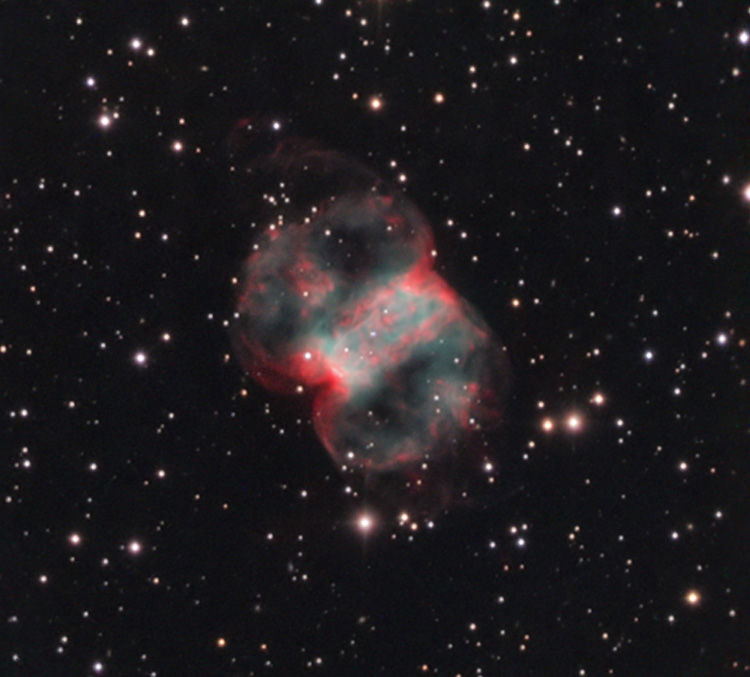
About this Image |
|
|
The appearance of the quite faint M76 resembles to some degree that of the Dumbbell Nebula M27.
Most probably, the main body (the bar, or cork) is a bright and slightly elliptical ring we see edge-on,
from only a few degrees off its equatorial plane. This ring seems to expand at about 42 km/sec.
|
|
|
| Optics |
16" cassegrain in secondary focus at f/10 |
| Mount | MK-100 GEM |
| Camera | SBIG STL-11000M at -30C, internal filter wheel |
| Filters | Astronomik Ha + RGB |
| Date | Dec 07, 2005. |
| Location | Wildon/Austria |
| Sky Conditions | mag 5 sky, seeing unstable, temperature 0 C, |
| Exposure |
Ha = 60 minutes (30 minute sub-exposures),
R:G:B = 60:50:60 min (10 minute sub-exposures), all binned 2x2. |
| Processing |
Image aquisition, registration and color combine in Maxim;
synthetic luminance from RGB, H-alpha blended into red channel, curves, unsharp mask, color balance in Photoshop; Noise reduction by Neatimage for dark areas; |